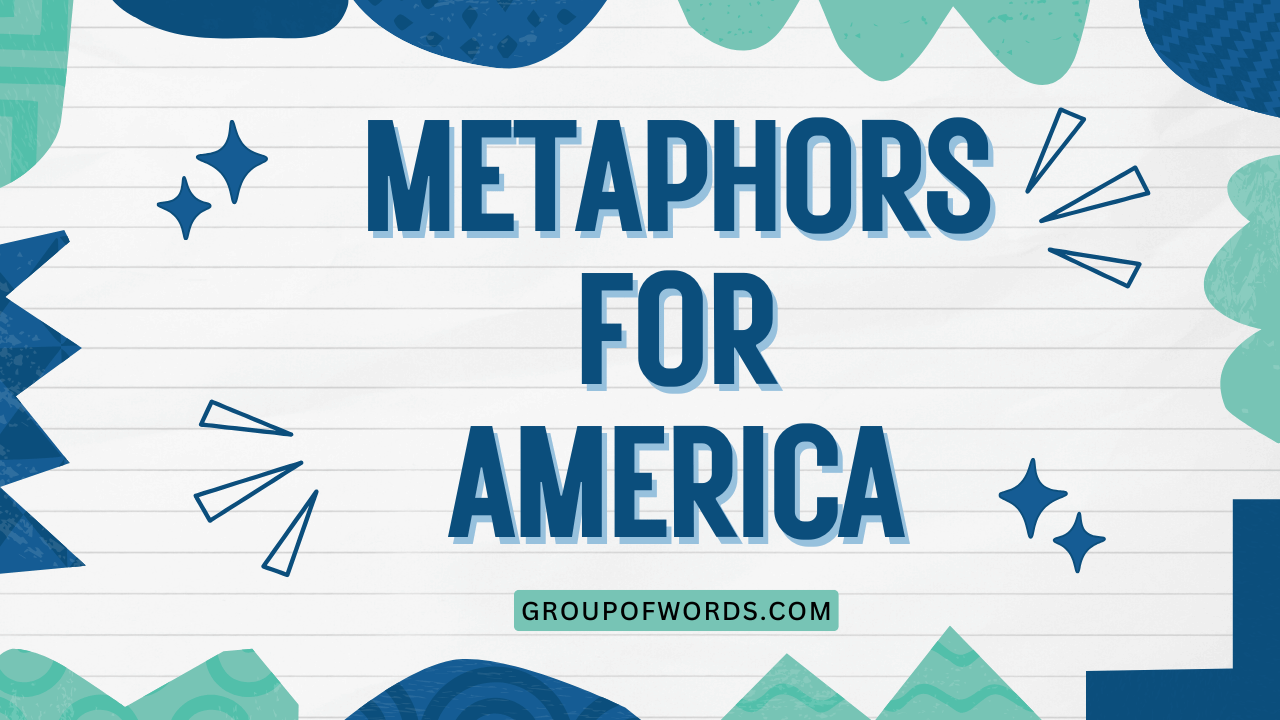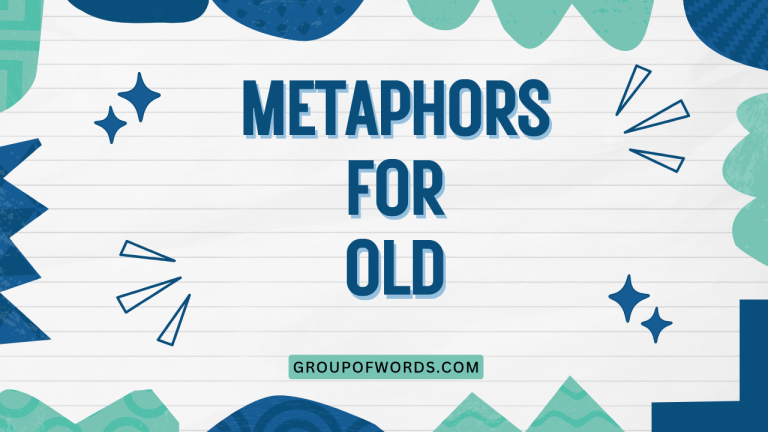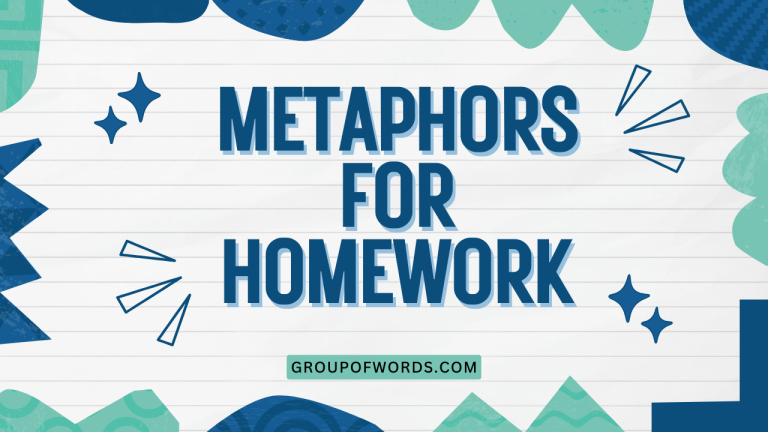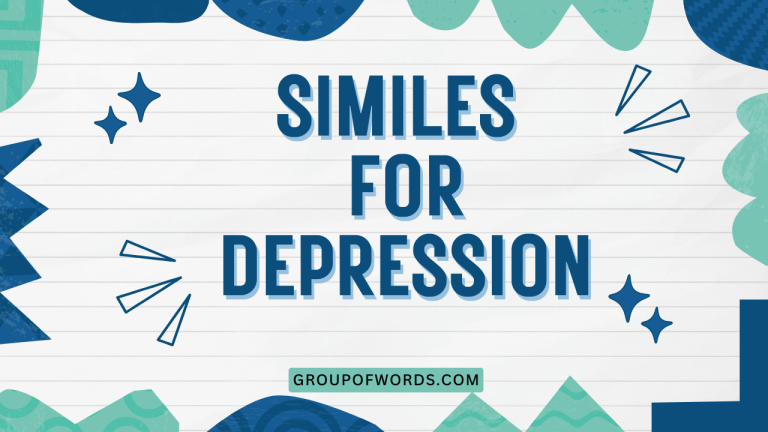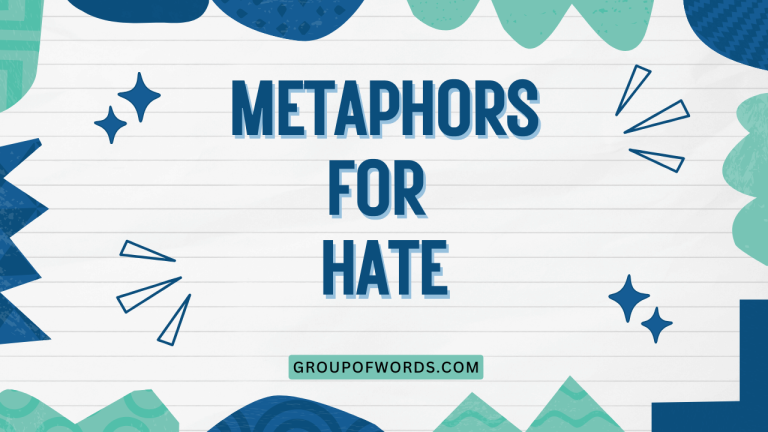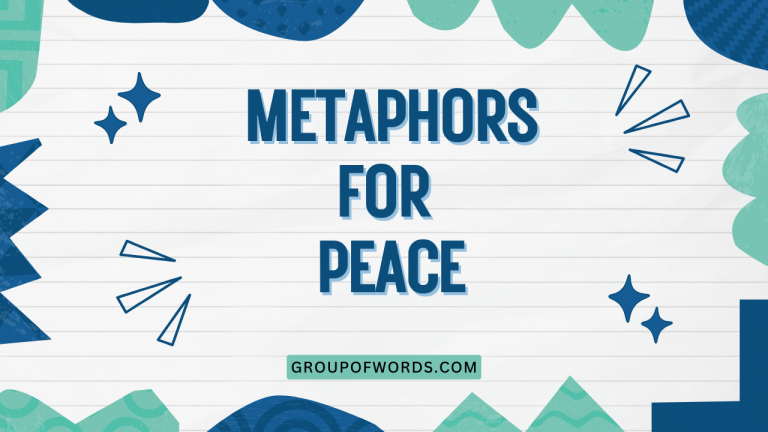America in Metaphor: Exploring Figurative Language
Metaphors are powerful tools that allow us to understand complex concepts by relating them to something familiar. When applied to a nation as vast and multifaceted as America, metaphors can reveal underlying perceptions, values, and aspirations.
Understanding these metaphors not only enriches our comprehension of American identity but also enhances our grasp of figurative language in English. This article will explore various metaphors used to describe America, delving into their meanings, origins, and cultural significance.
This guide is invaluable for English language learners, students of American culture, and anyone interested in the art of persuasive communication.
Whether you’re preparing for an exam, aiming to improve your writing, or simply curious about the nuances of language, this comprehensive guide will equip you with the knowledge and skills to master the use and interpretation of metaphors for America.
Table of Contents
- Introduction
- Definition of Metaphor
- Structural Breakdown of Metaphors
- Types of Metaphors for America
- Examples of Metaphors for America
- Usage Rules for Metaphors
- Common Mistakes in Using Metaphors
- Practice Exercises
- Advanced Topics
- FAQ
- Conclusion
Definition of Metaphor
What is a Metaphor?
A metaphor is a figure of speech that directly compares two unrelated things, asserting that one thing *is* another, to highlight shared qualities or create a new understanding. Unlike similes, which use “like” or “as” to make a comparison, metaphors make a direct assertion.
Metaphors are used to add color, depth, and emotional resonance to language, making it more engaging and memorable. They allow us to see familiar concepts in new and insightful ways.
Classification of Metaphors
Metaphors can be classified in several ways, including:
- Standard Metaphors: Common and widely understood comparisons (e.g., “time is money”).
- Novel Metaphors: Original and creative comparisons that offer fresh perspectives (e.g., “the city is a concrete jungle”).
- Dead Metaphors: Metaphors that have become so overused that they are no longer recognized as figurative (e.g., “the leg of a table”).
- Mixed Metaphors: Inconsistent or illogical comparisons that create confusion (e.g., “we need to nip it in the bud to iron out the wrinkles”).
Function of Metaphors
Metaphors serve several important functions in language and communication:
- Explanation: Simplifying complex ideas by relating them to something familiar.
- Persuasion: Influencing opinions by framing arguments in a compelling and evocative way.
- Aesthetic Appeal: Enhancing the beauty and expressiveness of language.
- Conceptual Understanding: Shaping our understanding of abstract concepts by grounding them in concrete experiences.
Contexts of Metaphor Use
Metaphors are used in a wide range of contexts, including:
- Literature: Poetry, novels, and plays often use metaphors to create imagery and convey deeper meaning.
- Politics: Political speeches and debates frequently employ metaphors to persuade and inspire audiences.
- Everyday Conversation: We use metaphors in everyday language to express ourselves more vividly and efficiently.
- Business: Metaphors are used in marketing and advertising to create memorable brand identities and persuasive messages.
Structural Breakdown of Metaphors
Tenor and Vehicle
I.A. Richards, a prominent literary critic, introduced the terms tenor and vehicle to describe the two key components of a metaphor. The tenor is the subject being described, while the vehicle is the object or concept used to describe it. In the metaphor “America is a melting pot,” America is the tenor, and “melting pot” is the vehicle. Understanding this distinction helps analyze how metaphors work and what qualities are being transferred.
The relationship between the tenor and vehicle is crucial for the metaphor’s effectiveness. The vehicle should illuminate certain aspects of the tenor, making it more understandable or relatable.
A well-chosen vehicle can reveal hidden connections and provide fresh insights.
Ground
The ground refers to the shared characteristics or similarities between the tenor and the vehicle. It’s the basis upon which the comparison is made. In the “melting pot” metaphor, the ground includes the idea of different elements coming together and blending into a unified whole. Identifying the ground is essential for interpreting the meaning and significance of a metaphor. The ground represents the common attributes that make the comparison meaningful and relevant.
For example, if we consider the metaphor “America is a beacon of hope,” the ground lies in the shared qualities of guidance, promise, and safety. Both a beacon and America, in this context, symbolize a source of light and direction for those seeking a better future.
Types of Metaphors for America
The Melting Pot
The “melting pot” is a classic metaphor for America, suggesting that immigrants from different cultures and backgrounds come together and assimilate into a unified American identity. It implies a blending process where unique cultural traits are gradually lost as individuals adopt the dominant culture’s customs and values.
This metaphor has been both praised for its vision of unity and criticized for its implication of cultural homogenization.
Historically, the “melting pot” metaphor was particularly popular in the early 20th century, during a period of significant immigration to the United States. It reflected the belief that America could forge a new, stronger identity by integrating diverse populations.
However, it also raised concerns about the loss of cultural heritage and the pressure on immigrants to conform.
The Salad Bowl
In contrast to the “melting pot,” the “salad bowl” metaphor suggests that different cultures coexist in America while retaining their distinct identities. Each ingredient in a salad (e.g., lettuce, tomatoes, cucumbers) remains separate and recognizable, contributing to the overall flavor without losing its individual characteristics.
This metaphor emphasizes cultural diversity and multiculturalism, celebrating the unique contributions of different ethnic groups.
The “salad bowl” metaphor gained prominence in the late 20th century as a response to the perceived limitations of the “melting pot” concept. It reflects a growing appreciation for cultural diversity and a desire to preserve distinct cultural identities within a larger society.
This metaphor acknowledges that individuals can be both American and retain their cultural heritage.
The Beacon of Hope
The “beacon of hope” metaphor portrays America as a source of light and guidance for those seeking a better life. It suggests that America offers refuge, opportunity, and freedom to people around the world.
This metaphor is often associated with the Statue of Liberty, which stands as a symbol of welcome and promise for immigrants arriving in America.
The “beacon of hope” metaphor has deep historical roots, dating back to the early days of American settlement. It reflects the belief that America is a land of opportunity where individuals can escape oppression and build a better future.
This metaphor has inspired generations of immigrants and continues to shape perceptions of America as a land of promise.
The Land of Opportunity
The “land of opportunity” metaphor emphasizes the idea that America offers equal opportunities for success to all individuals, regardless of their background or origin. It suggests that through hard work, determination, and perseverance, anyone can achieve their dreams in America.
This metaphor is closely linked to the concept of the American Dream.
The “land of opportunity” metaphor has been a central part of the American narrative since its founding. It reflects the belief that America is a meritocracy where individuals are rewarded based on their abilities and efforts.
However, it’s also important to acknowledge that access to opportunity is not always equal, and systemic inequalities can pose significant barriers to success.
The City Upon a Hill
The “city upon a hill” metaphor, derived from a sermon by Puritan leader John Winthrop, portrays America as a model society that serves as an example for the rest of the world. It suggests that America has a moral obligation to uphold high standards of justice, freedom, and democracy.
This metaphor reflects a sense of American exceptionalism and a belief in America’s unique role in world history.
The “city upon a hill” metaphor has been invoked by American leaders throughout history, from John F. Kennedy to Ronald Reagan.
It represents a vision of America as a beacon of moral leadership and a source of inspiration for other nations. However, it has also been criticized for its potential to promote arrogance and a sense of superiority.
The Superpower
The metaphor of “superpower” describes America’s position as a dominant global force, possessing significant economic, military, and cultural influence. This metaphor highlights America’s role in shaping international relations and its ability to project power around the world.
It reflects both the opportunities and responsibilities that come with being a global leader.
The “superpower” metaphor emerged in the aftermath of World War II, as America emerged as one of the world’s leading powers. It acknowledges America’s unique capabilities and its influence on global affairs.
However, it also raises questions about the appropriate use of power and the potential for overreach.
Examples of Metaphors for America
The Melting Pot Examples
The following table provides examples of how the “melting pot” metaphor is used in various contexts. Each example illustrates the idea of diverse cultures blending into a unified whole.
| Example | Explanation |
|---|---|
| “America is a melting pot where cultures blend and create a unique American identity.” | This is a straightforward application of the metaphor, emphasizing cultural assimilation. |
| “The immigrant experience in America is like being thrown into a melting pot, where you lose your old identity and become something new.” | This highlights the transformative aspect of immigration and the pressure to assimilate. |
| “New York City is a melting pot of languages, cuisines, and traditions.” | This applies the metaphor to a specific location, emphasizing its cultural diversity. |
| “The American identity is a product of the melting pot, a blend of influences from around the world.” | This suggests that American culture is a synthesis of various cultural contributions. |
| “Some worry that the melting pot is losing its strength, as people cling more tightly to their ethnic identities.” | This expresses concern about the potential erosion of cultural unity. |
| “The beauty of America lies in its melting pot, where different cultures come together to create a vibrant tapestry.” | This emphasizes the positive aspects of cultural diversity and integration. |
| “Critics argue that the melting pot ideal ignores the challenges faced by immigrants in assimilating into American society.” | This points out the difficulties and inequalities associated with assimilation. |
| “The American education system has historically been seen as a tool for promoting the melting pot ideal, encouraging students to adopt American values and customs.” | This highlights the role of education in cultural assimilation. |
| “Food in America is a reflection of its melting pot heritage, with dishes like pizza and tacos becoming staples of the American diet.” | This illustrates how cultural integration manifests in everyday aspects of life. |
| “The concept of the melting pot has been challenged in recent years, with many advocating for a more multicultural approach that celebrates diversity.” | This acknowledges the shift towards a more inclusive and diverse perspective. |
| “In the melting pot, immigrants often face pressure to shed their native languages and embrace English as their primary language.” | This underscores the linguistic assimilation that often accompanies the melting pot ideal. |
| “The melting pot metaphor suggests that cultural differences are eventually dissolved, creating a homogenous American culture.” | This summarizes the core idea of the melting pot and its emphasis on homogenization. |
| “The strength of the melting pot lies in its ability to create a sense of national unity among people from diverse backgrounds.” | This highlights the potential for social cohesion that the melting pot can foster. |
| “The Statue of Liberty stands as a symbol of the melting pot, welcoming immigrants to a new land where they can become part of the American story.” | This connects the metaphor to a specific symbol of American identity and immigration. |
| “The melting pot ideal has been criticized for overlooking the contributions of marginalized groups and perpetuating systemic inequalities.” | This points out the potential for the melting pot to reinforce existing power structures. |
| “The American melting pot is constantly evolving, as new waves of immigrants bring their unique cultures and traditions to the country.” | This acknowledges the dynamic nature of American culture and its ongoing transformation. |
| “The melting pot metaphor is often used to describe the process of cultural exchange and integration in urban centers like New York and Los Angeles.” | This applies the metaphor to specific urban areas known for their cultural diversity. |
| “The melting pot suggests that immigrants should assimilate into American culture, adopting American values and customs while leaving behind their own.” | This emphasizes the assimilationist aspect of the melting pot and its potential impact on cultural identity. |
| “The melting pot metaphor can be seen as both a source of strength and a source of tension, as it highlights the potential for both unity and conflict.” | This acknowledges the complex and multifaceted nature of the melting pot concept. |
| “The melting pot ideal has shaped American immigration policy, encouraging immigrants to integrate into American society and become productive members of the workforce.” | This highlights the influence of the melting pot on immigration policies and societal expectations. |
| “The melting pot metaphor, while aiming for unity, sometimes overlooks the importance of preserving individual cultural identities.” | This emphasizes the need to balance unity with the preservation of cultural heritage. |
The Salad Bowl Examples
The following table provides examples of how the “salad bowl” metaphor is used to describe America, emphasizing the coexistence of distinct cultures.
| Example | Explanation |
|---|---|
| “America is a salad bowl, where different cultures coexist while maintaining their unique identities.” | This is a direct application of the metaphor, emphasizing cultural preservation. |
| “Unlike the melting pot, the salad bowl allows immigrants to retain their cultural heritage while participating in American society.” | This contrasts the salad bowl with the melting pot, highlighting its emphasis on diversity. |
| “Each culture in America is like an ingredient in a salad, contributing its unique flavor to the overall mix.” | This uses the salad analogy to illustrate the contributions of different cultures. |
| “The salad bowl celebrates multiculturalism, recognizing the value of diverse perspectives and traditions.” | This emphasizes the positive aspects of cultural diversity and inclusivity. |
| “In the salad bowl, individuals can be both American and maintain their ethnic identity.” | This highlights the possibility of dual identities and cultural hybridity. |
| “The salad bowl metaphor promotes cultural exchange and understanding, as people learn from and appreciate different traditions.” | This emphasizes the potential for cross-cultural learning and appreciation. |
| “The salad bowl approach recognizes that cultural differences are not something to be dissolved but rather something to be celebrated.” | This underscores the value of preserving cultural distinctiveness. |
| “The salad bowl metaphor offers a more inclusive vision of American identity, recognizing the contributions of all cultural groups.” | This highlights the potential for greater inclusivity and representation. |
| “The salad bowl model encourages cultural communities to maintain their traditions, languages, and customs.” | This emphasizes the importance of cultural preservation and continuity. |
| “In the salad bowl, cultural diversity is seen as a source of strength and innovation, rather than a source of division.” | This highlights the potential for diversity to foster creativity and progress. |
| “The salad bowl metaphor recognizes that cultural identities are fluid and dynamic, constantly evolving and adapting to new influences.” | This acknowledges the dynamic nature of culture and its ongoing transformation. |
| “The salad bowl offers a more nuanced understanding of American identity, recognizing that it is not a monolithic entity but rather a mosaic of diverse cultures.” | This emphasizes the complexity and richness of American culture. |
| “The salad bowl metaphor challenges the notion of a single, dominant American culture, recognizing the validity of multiple cultural perspectives.” | This questions the idea of cultural dominance and promotes cultural pluralism. |
| “The salad bowl model encourages cultural communities to share their traditions and customs with others, fostering cross-cultural understanding and appreciation.” | This emphasizes the importance of cultural exchange and mutual respect. |
| “The salad bowl metaphor recognizes that cultural identities are not fixed or static but rather are shaped by a variety of factors, including history, geography, and social context.” | This acknowledges the complex and multifaceted nature of cultural identity. |
| “The salad bowl offers a more equitable vision of American society, where all cultures are valued and respected equally.” | This highlights the potential for greater equality and social justice. |
| “The salad bowl metaphor recognizes that cultural diversity is not just a demographic reality but also a valuable resource that can enrich American society.” | This emphasizes the potential for diversity to contribute to social and economic progress. |
| “The salad bowl model encourages cultural communities to work together to address common challenges and build a more just and equitable society.” | This highlights the potential for collaboration and collective action. |
| “The salad bowl metaphor recognizes that cultural identities are not mutually exclusive and that individuals can embrace multiple cultural affiliations.” | This emphasizes the possibility of multiple identities and cultural hybridity. |
| “The salad bowl offers a more inclusive and welcoming vision of American identity, where all individuals are valued and respected for their unique cultural contributions.” | This underscores the importance of inclusivity and respect for cultural diversity. |
| “The salad bowl metaphor, by celebrating diversity, encourages a more vibrant and innovative American society.” | This connects cultural diversity to societal progress and innovation. |
| “While the melting pot aims for uniformity, the salad bowl embraces the beauty of distinct cultural flavors coexisting harmoniously.” | This emphasizes the contrast between uniformity and harmonious coexistence. |
The Beacon of Hope Examples
The following table illustrates the use of the “beacon of hope” metaphor, which portrays America as a source of guidance and promise.
| Example | Explanation |
|---|---|
| “America has always been a beacon of hope for those seeking freedom and opportunity.” | This is a direct application of the metaphor, emphasizing America’s role as a refuge. |
| “The Statue of Liberty stands as a beacon of hope, welcoming immigrants to American shores.” | This connects the metaphor to a specific symbol of American identity. |
| “For many refugees, America represents a beacon of hope, a chance to rebuild their lives in safety and security.” | This highlights the metaphor’s relevance to the refugee experience. |
| “America’s commitment to democracy and human rights makes it a beacon of hope for people around the world.” | This emphasizes the ideological basis for America’s role as a beacon. |
| “Even in times of trouble, America remains a beacon of hope, inspiring others to strive for a better future.” | This suggests that America’s role as a beacon persists even during difficult times. |
| “The American Dream is fueled by the belief that America is a beacon of hope, where anything is possible with hard work and determination.” | This connects the metaphor to the concept of the American Dream. |
| “America’s economic success has made it a beacon of hope for entrepreneurs and innovators from around the world.” | This highlights the economic dimension of America’s role as a beacon. |
| “America’s educational institutions serve as a beacon of hope, attracting students from all corners of the globe.” | This emphasizes the role of education in America’s global appeal. |
| “America’s cultural influence has made it a beacon of hope for artists, musicians, and filmmakers seeking creative freedom.” | This highlights the cultural dimension of America’s role as a beacon. |
| “America’s commitment to scientific research and technological innovation has made it a beacon of hope for those seeking solutions to global challenges.” | This emphasizes the role of science and technology in America’s global leadership. |
| “The promise of religious freedom in America has made it a beacon of hope for people of all faiths.” | This highlights the importance of religious freedom in attracting immigrants. |
| “America’s role as a beacon of hope is not without its challenges, as the country grapples with issues of inequality and injustice.” | This acknowledges the complexities and contradictions of America’s role. |
| “Despite its flaws, America continues to be seen as a beacon of hope by many who dream of a better life.” | This suggests that America’s appeal persists despite its imperfections. |
| “America’s commitment to humanitarian aid and disaster relief has made it a beacon of hope for those affected by conflict and natural disasters.” | This emphasizes the importance of humanitarian assistance in shaping America’s image. |
| “America’s role as a beacon of hope is constantly being tested, as the country faces new challenges both at home and abroad.” | This acknowledges the ongoing nature of the challenges facing America. |
| “America’s commitment to democratic values and the rule of law makes it a beacon of hope for those who yearn for freedom and justice.” | This highlights the importance of democratic principles in shaping America’s identity. |
| “America’s role as a beacon of hope is not just a matter of rhetoric but also a matter of action, requiring a sustained commitment to human rights and social justice.” | This emphasizes the importance of concrete actions in upholding America’s values. |
| “America’s role as a beacon of hope is a source of pride for many Americans, who believe that their country has a special responsibility to lead the world.” | This highlights the sense of national pride associated with America’s global leadership. |
| “The beacon of hope metaphor reminds us that America’s strength lies not just in its economic and military power but also in its ability to inspire and uplift others.” | This emphasizes the importance of soft power and moral leadership. |
| “The beacon of hope metaphor calls on Americans to live up to their ideals and to create a society that truly reflects the values of freedom, equality, and opportunity.” | This underscores the importance of living up to America’s stated values. |
| “As a beacon of hope, America must constantly strive to improve itself and to address the challenges that threaten its standing in the world.” | This emphasizes the need for continuous improvement and self-reflection. |
| “Even with its imperfections, America’s historical role as a beacon of hope continues to shape its identity and influence its actions on the global stage.” | This acknowledges the enduring impact of the beacon of hope metaphor on American identity and foreign policy. |
The Land of Opportunity Examples
This table shows how the “land of opportunity” metaphor is used, emphasizing the potential for success through hard work.
| Example | Explanation |
|---|---|
| “America is the land of opportunity, where anyone can achieve their dreams with hard work and determination.” | This is a direct application of the metaphor, emphasizing the potential for upward mobility. |
| “Immigrants come to America seeking the land of opportunity, hoping to build a better life for themselves and their families.” | This highlights the metaphor’s relevance to the immigrant experience. |
| “The American Dream is rooted in the belief that America is the land of opportunity, where success is within reach for all.” | This connects the metaphor to the concept of the American Dream. |
| “America’s free market economy is often seen as a key factor in its status as the land of opportunity.” | This emphasizes the economic dimension of the metaphor. |
| “America’s educational system is designed to provide equal opportunities for all, reinforcing the idea that it is the land of opportunity.” | This highlights the role of education in promoting opportunity. |
| “America’s entrepreneurial spirit is a testament to its status as the land of opportunity, where innovation and risk-taking are rewarded.” | This emphasizes the importance of entrepreneurship in driving economic growth. |
| “America’s diverse population is a source of strength, contributing to its status as the land of opportunity.” | This highlights the role of diversity in fostering innovation and creativity. |
| “America’s open society allows individuals to pursue their passions and achieve their full potential, making it the land of opportunity.” | This emphasizes the importance of individual freedom and self-expression. |
| “America’s history is filled with stories of individuals who overcame adversity and achieved success, proving that it is the land of opportunity.” | This highlights the importance of individual stories in shaping the American narrative. |
| “America’s commitment to equality and justice is essential to maintaining its status as the land of opportunity.” | This emphasizes the importance of social justice in promoting opportunity. |
| “The land of opportunity metaphor is often used to attract foreign investment and skilled workers to America.” | This highlights the economic benefits of promoting the idea of opportunity. |
| “The land of opportunity is not without its challenges, as many Americans struggle with poverty, inequality, and lack of access to resources.” | This acknowledges the complexities and contradictions of the American experience. |
| “Despite these challenges, America continues to be seen as the land of opportunity by many who believe that it offers the best chance for success.” | This suggests that America’s appeal persists despite its imperfections. |
| “The land of opportunity metaphor is often used to justify policies that promote economic growth and free markets.” | This highlights the ideological implications of the metaphor. |
| “The land of opportunity is not just a physical place but also a state of mind, a belief in the possibility of a better future.” | This emphasizes the psychological dimension of the metaphor. |
| “The land of opportunity is a constant work in progress, requiring a sustained effort to create a more just and equitable society.” | This underscores the importance of continuous improvement and social reform. |
| “The land of opportunity metaphor is a source of hope for many Americans, who believe that their children will have a better life than they did.” | This highlights the intergenerational dimension of the American Dream. |
| “The land of opportunity is not just about individual success but also about contributing to the common good and building a stronger society.” | This emphasizes the importance of civic engagement and social responsibility. |
| “The land of opportunity metaphor calls on Americans to embrace diversity, promote innovation, and create a society where everyone has the chance to succeed.” | This underscores the importance of inclusivity and social mobility. |
| “The land of opportunity is a powerful symbol of American identity, inspiring generations to strive for a better future.” | This highlights the enduring appeal of the American Dream. |
| “While the reality of America as a land of opportunity may fall short of the ideal, the aspiration remains a driving force for progress.” | This acknowledges the gap between reality and aspiration while emphasizing the importance of striving for improvement. |
| “The land of opportunity requires constant nurturing through policies that support education, healthcare, and economic equality.” | This emphasizes the need for proactive policies to ensure equal access to opportunity. |
The City Upon a Hill Examples
The following table provides examples of the “city upon a hill” metaphor, reflecting America’s role as a model for the world.
| Example | Explanation |
|---|---|
| “America should be a city upon a hill, a shining example of democracy and freedom for the rest of the world.” | This is a direct application of the metaphor, emphasizing America’s role as a model. |
| “The Founding Fathers envisioned America as a city upon a hill, a nation that would inspire others with its commitment to liberty and justice.” | This connects the metaphor to the founding principles of the United States. |
| “The city upon a hill metaphor implies that America has a moral obligation to uphold high standards of conduct and to promote democracy around the world.” | This emphasizes the ethical dimension of America’s global leadership. |
| “America’s success as a democracy has made it a city upon a hill, attracting people from all over the world who seek freedom and opportunity.” | This highlights the importance of democratic values in shaping America’s image. |
| “The city upon a hill metaphor is often used to justify American exceptionalism, the belief that America is unique and has a special destiny.” | This emphasizes the ideological implications of the metaphor. |
| “The city upon a hill metaphor is not without its critics, who argue that it can lead to arrogance and a sense of superiority.” | This acknowledges the potential downsides of American exceptionalism. |
| “The city upon a hill metaphor reminds us that America’s actions have consequences and that it must strive to live up to its ideals.” | This emphasizes the importance of accountability and ethical conduct. |
| “The city upon a hill metaphor is often invoked by American leaders to inspire their citizens to work together to build a better society.” | This highlights the role of the metaphor in promoting civic engagement. |
| “The city upon a hill metaphor is a challenge to America, a call to live up to its potential and to be a beacon of hope for the world.” | This emphasizes the aspirational dimension of the metaphor. |
| “The city upon a hill metaphor is a reminder that America’s strength lies not just in its military and economic power but also in its moral leadership.” | This highlights the importance of soft power and ethical conduct. |
| “The city upon a
hill metaphor calls on Americans to be a shining light, demonstrating the virtues of democracy and justice to other nations.” |
This reinforces the idea of America as a moral exemplar. |
| “The concept of America as a city upon a hill encourages a sense of national pride and responsibility towards global affairs.” | This connects the metaphor to national identity and global responsibility. |
| “To truly be a city upon a hill, America must constantly address its internal issues and strive for a more just and equitable society.” | This emphasizes the need for domestic progress to support America’s global role. |
| “The city upon a hill represents a high standard, challenging America to continually improve and act as a positive force in the world.” | This highlights the ongoing effort required to fulfill the metaphor’s promise. |
| “The metaphor of the city upon a hill is a reminder that the world is watching America, and its actions have far-reaching consequences.” | This underscores the global impact of America’s decisions and policies. |
The Superpower Examples
This table illustrates how the “superpower” metaphor is used, emphasizing America’s global influence and power.
| Example | Explanation |
|---|---|
| “America is the world’s only superpower, possessing unmatched economic, military, and cultural influence.” | This is a direct application of the metaphor, emphasizing America’s dominance. |
| “As a superpower, America has a responsibility to maintain global stability and to address threats to international peace and security.” | This highlights the responsibilities that come with being a superpower. |
| “America’s military strength is a key component of its status as a superpower, allowing it to project power around the world.” | This emphasizes the importance of military might in shaping America’s global role. |
| “America’s economic power is another key factor in its status as a superpower, giving it leverage in international negotiations and trade agreements.” | This highlights the importance of economic strength in shaping America’s global role. |
| “America’s cultural influence, through its movies, music, and technology, has made it a superpower in the realm of ideas and values.” | This emphasizes the importance of soft power in shaping America’s global role. |
| “The superpower metaphor is often used to justify American intervention in foreign conflicts and its efforts to shape the global order.” | This highlights the ideological implications of the metaphor. |
| “The superpower metaphor is not without its critics, who argue that it can lead to arrogance and a disregard for the interests of other nations.” | This acknowledges the potential downsides of being a superpower. |
| “The superpower metaphor reminds us that America’s actions have a significant impact on the rest of the world and that it must exercise its power wisely.” | This emphasizes the importance of responsible leadership and diplomacy. |
| “America’s superpower status is constantly being challenged by the rise of new powers and by the emergence of global challenges that require collective action.” | This acknowledges the changing dynamics of the global landscape. |
| “The superpower metaphor is a reminder that America’s strength lies not just in its material resources but also in its ability to build alliances and to work with other nations to achieve common goals.” | This emphasizes the importance of cooperation and multilateralism. |
| “The superpower metaphor calls on Americans to be responsible global citizens and to use their power to promote peace, prosperity, and justice around the world.” | This underscores the importance of ethical conduct and global responsibility. |
| “The term ‘superpower’ often implies a level of influence and control that can be both beneficial and detrimental in global politics.” | This acknowledges the dual nature of superpower status. |
| “As a superpower, America’s decisions resonate globally, impacting economies, political landscapes, and social dynamics worldwide.” | This highlights the far-reaching effects of American policies. |
| “The superpower status requires America to balance its national interests with its global responsibilities, a task that is often complex and challenging.” | This emphasizes the difficulty of balancing domestic and international priorities. |
| “The notion of America as a superpower is frequently debated in discussions about foreign policy, trade, and international relations.” | This underscores the ongoing relevance of the superpower concept in policy discussions. |
Usage Rules for Metaphors
Clarity and Relevance
When using metaphors, ensure they are clear and relevant to your audience. A good metaphor should enhance understanding, not create confusion.
The connection between the tenor and vehicle should be easily recognizable. If the metaphor is too obscure or far-fetched, it will fail to resonate and may even detract from your message.
Consider the context in which you are using the metaphor. What are you trying to explain or emphasize?
Choose a vehicle that is appropriate for the subject matter and the audience’s knowledge and experience. A metaphor that works well in one context may be ineffective in another.
Consistency
Maintain consistency in your use of metaphors. Avoid mixing metaphors that create conflicting or illogical images.
A consistent metaphor helps to reinforce your message and create a cohesive narrative. Shifting abruptly between unrelated metaphors can disrupt the flow of your argument and confuse your audience.
If you are using an extended metaphor, be sure to develop it logically and systematically. Explore the various aspects of the comparison and draw out the relevant parallels between the tenor and vehicle.
A well-developed extended metaphor can add depth and richness to your writing or speech.
Avoiding Cliches
Be mindful of cliches when using metaphors. Overused metaphors can lose their impact and become stale.
While familiar metaphors can be useful for quickly conveying a basic idea, they may not capture your audience’s attention or create a lasting impression. Strive to use fresh and original metaphors that offer new insights and perspectives.
If you do use a common metaphor, try to give it a unique twist or application. Add a new layer of meaning or connect it to a specific context.
This can help to revitalize the metaphor and make it more engaging for your audience. Originality in metaphor use can set your writing or speech apart and demonstrate your creativity and thoughtfulness.
Common Mistakes in Using Metaphors
Mixed Metaphors
A mixed metaphor combines two or more unrelated metaphorical images, resulting in a confusing and often unintentionally humorous effect. This usually happens when the writer or speaker loses track of the original metaphor and introduces another that clashes with it.
Mixed metaphors can undermine the clarity and credibility of your message.
Example of a Mixed Metaphor: “We need to nip it in the bud to iron out the wrinkles.” (Combining gardening and fabric-related imagery)
Corrected: “We need to address the problem early to prevent further complications.” (Clear and direct statement)
Dead Metaphors
A dead metaphor is a figure of speech that has become so commonplace that it is no longer recognized as a metaphor. These expressions have lost their figurative meaning and are used as literal terms.
While dead metaphors are generally harmless, overuse can lead to dull and uninspired language.
Example of a Dead Metaphor: “The leg of the table.” (Originally a comparison between a table support and a human leg)
Note: While technically a metaphor, “leg of the table” is universally understood and accepted as a literal term.
Practice Exercises
Exercise 1: Identifying Metaphors
Identify the metaphors in the following sentences and explain their meaning:
- America is a symphony of cultures, each playing its unique tune.
- The American economy is a rollercoaster, with highs and lows that can take your breath away.
- The internet is a highway of information, connecting people from all corners of the globe.
Answer Key:
- Metaphor: America is a symphony. Meaning: America is composed of diverse cultures that come together to create a harmonious whole.
- Metaphor: The American economy is a rollercoaster. Meaning: The American economy experiences extreme fluctuations and is unpredictable.
- Metaphor: The internet is a highway. Meaning: The internet facilitates the flow of information between people and places.
Creating Metaphors
Create your own metaphors to describe the following concepts:
- The American political system
- The experience of being an immigrant in America
- The future of America
Example Answers:
- The American political system is a complex chess game, where each move can have far-reaching consequences.
- The experience of being an immigrant in America is like navigating a labyrinth, with challenges and rewards at every turn.
- The future of America is a blank canvas, waiting to be filled with the colors of innovation, progress, and unity.
Advanced Topics
Extended Metaphors
An extended metaphor is a metaphor that is developed over several lines or even throughout an entire work. It allows for a more complex and nuanced comparison, exploring various aspects of the relationship between the tenor and vehicle.
Extended metaphors can add depth, richness, and coherence to your writing or speech.
For example, you could extend the “America is a garden” metaphor by discussing the different types of plants (representing different cultures), the soil (representing the land and resources), the gardener (representing the government), and the weeds (representing social problems). This allows for a more comprehensive and detailed exploration of the metaphor’s meaning.
Metaphorical Reasoning
Metaphorical reasoning involves using metaphors to understand and solve problems. By framing a problem in terms of a familiar metaphor, you can gain new insights and identify potential solutions.
Metaphorical reasoning can be a powerful tool for innovation, creativity, and critical thinking.
For instance, if you are trying to address the issue of political polarization in America, you might use the metaphor of a “divided house.” This metaphor suggests that the country is weakened by internal conflict and that unity is essential for survival. This can lead to strategies that focus on building bridges, fostering dialogue, and finding common ground.
FAQ
What is the difference between a metaphor and a simile?
A metaphor directly equates two things (e.g., “America is a melting pot”), while a simile uses “like” or “as” to make a comparison (e.g., “America is like a melting pot”).
How can I avoid using cliches in my writing?
Read widely, experiment with language, and strive for originality. Look for fresh and unexpected ways to express your ideas.
What makes a metaphor effective?
Clarity, relevance, originality, and consistency are key factors in creating an effective metaphor.
Can a metaphor be too complex?
Yes, if a metaphor is too obscure or convoluted, it can confuse your audience and detract from your message.
How can I improve my use of metaphors?
Practice using metaphors in your writing and speaking. Pay attention to how others use metaphors and analyze their effectiveness.
Conclusion
Metaphors are essential tools for understanding and communicating complex ideas about America. By exploring the various metaphors used to describe the nation, we can gain deeper insights into its identity, values, and aspirations.
Mastering the art of metaphor not only enhances our language skills but also enriches our understanding of American culture and society. Whether you’re an English language learner, a student of American studies, or simply a curious individual, the knowledge and skills you’ve gained from this guide will serve you well in navigating the rich and complex world of figurative language.
